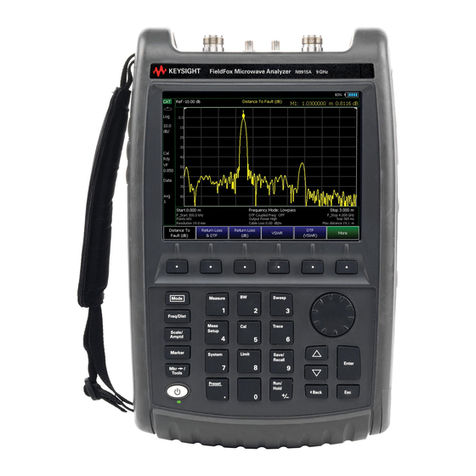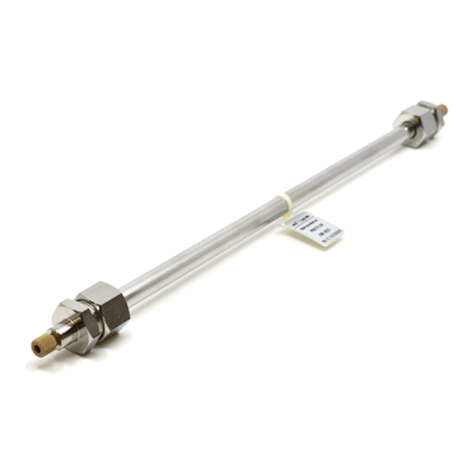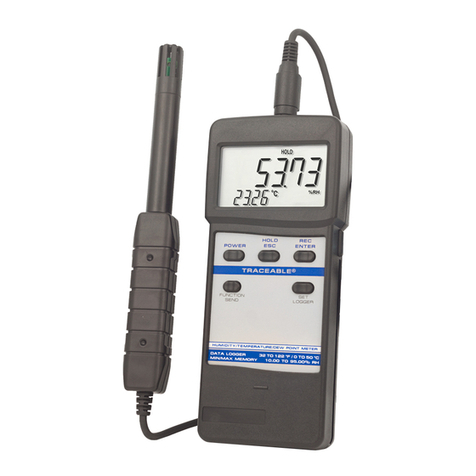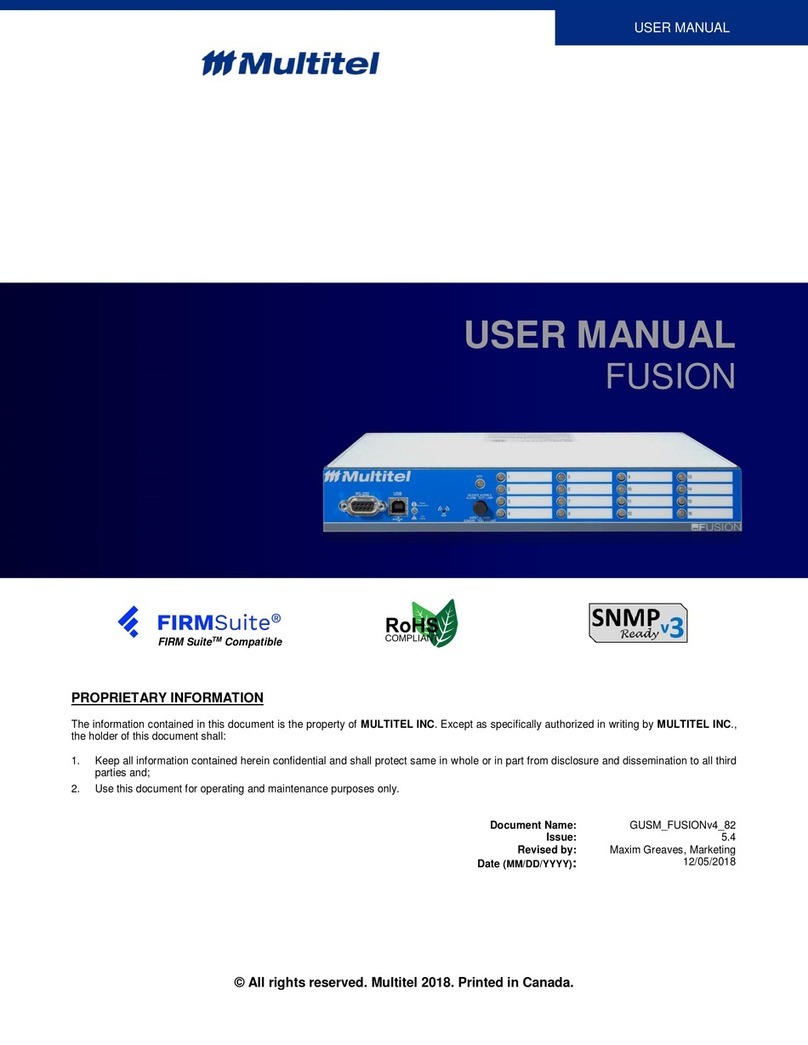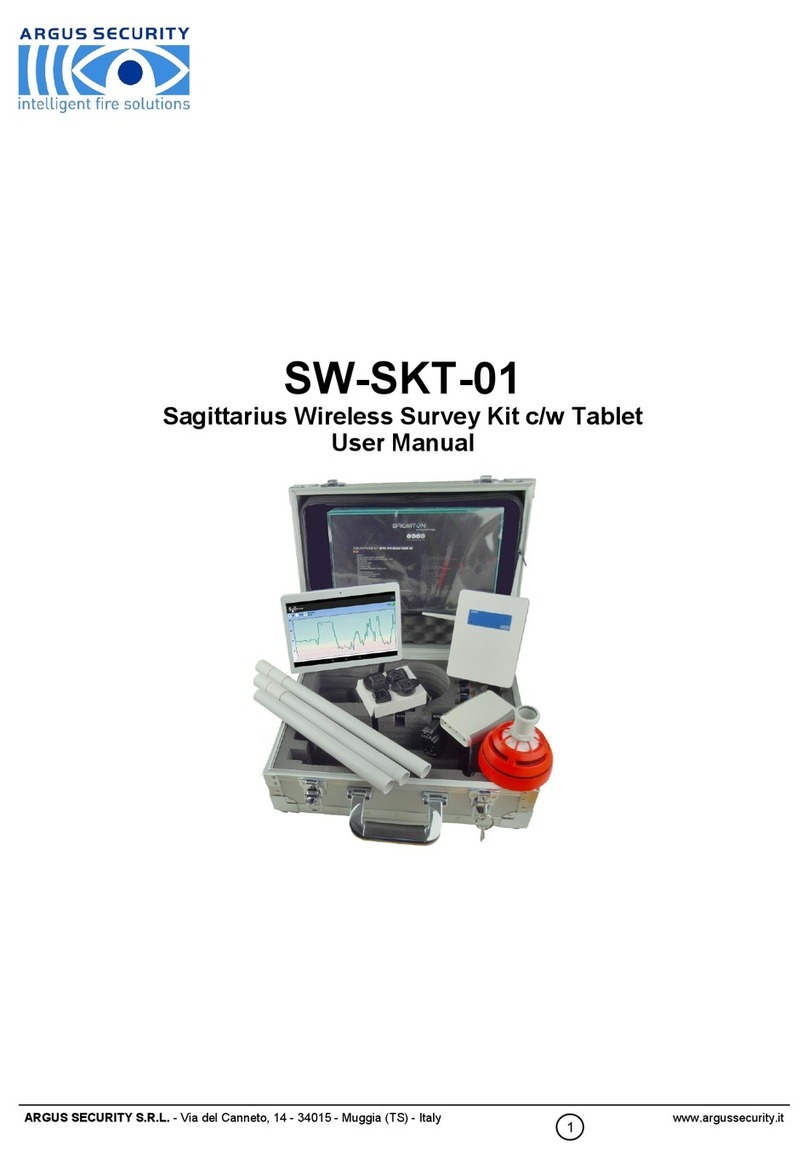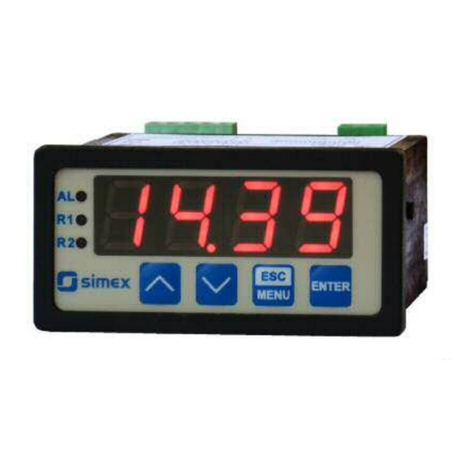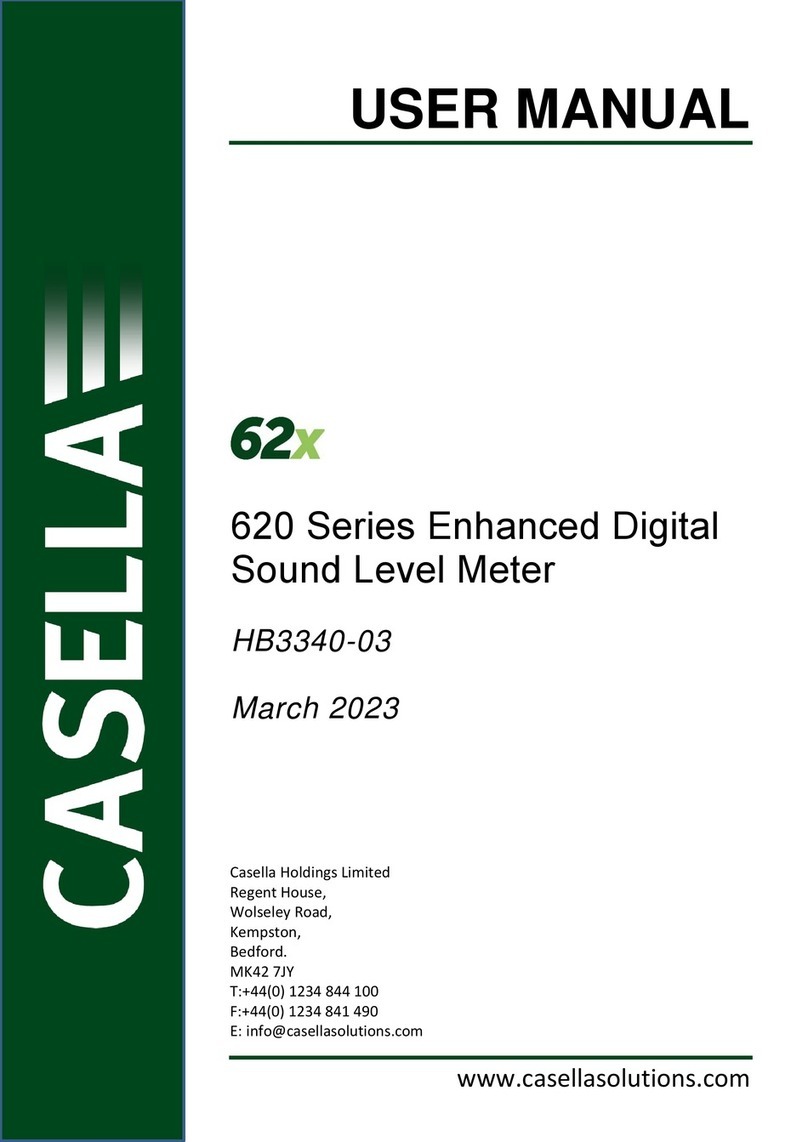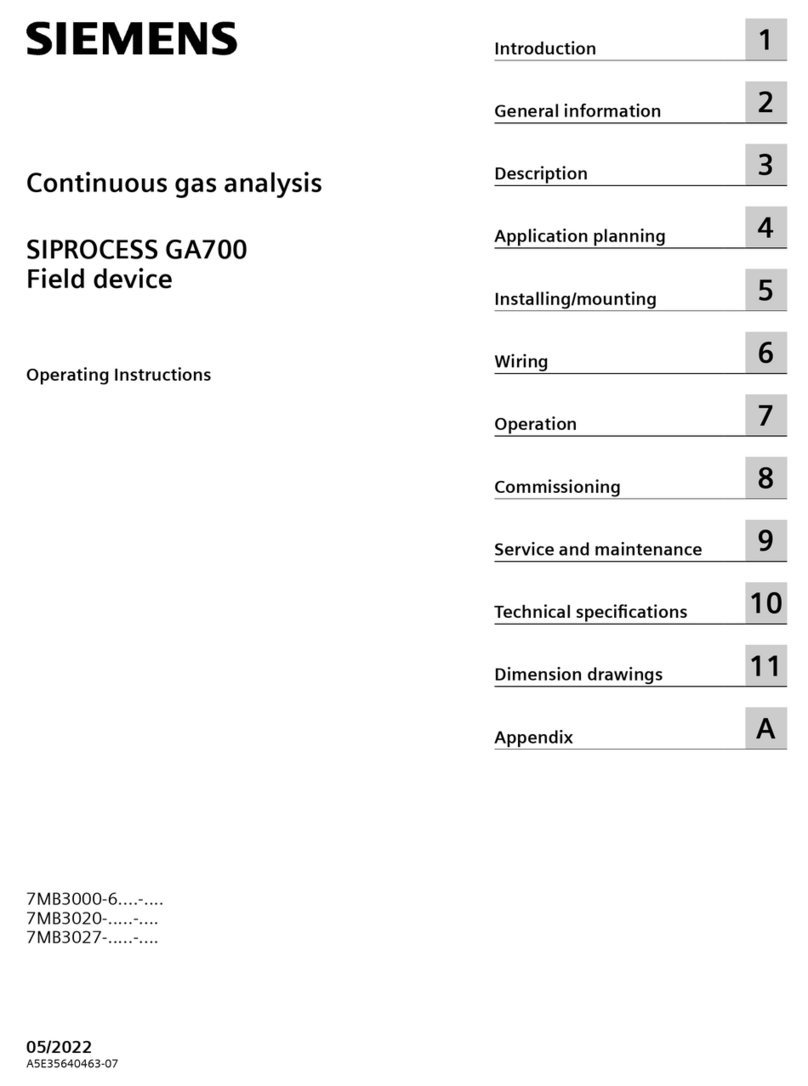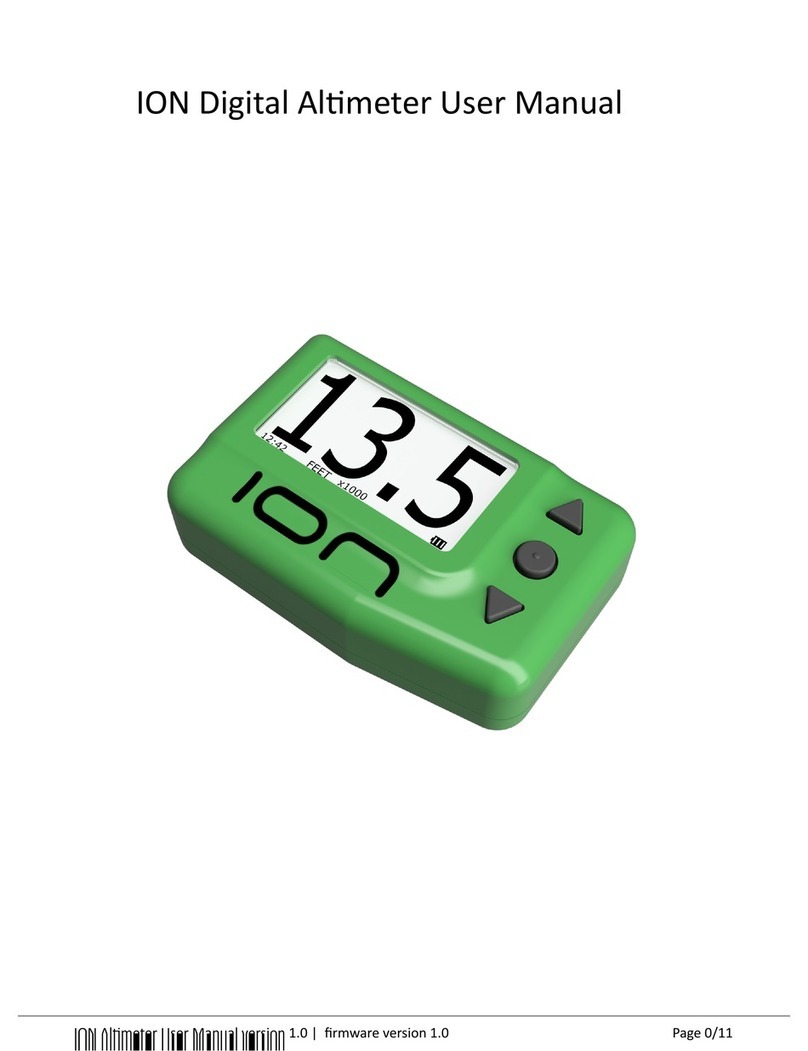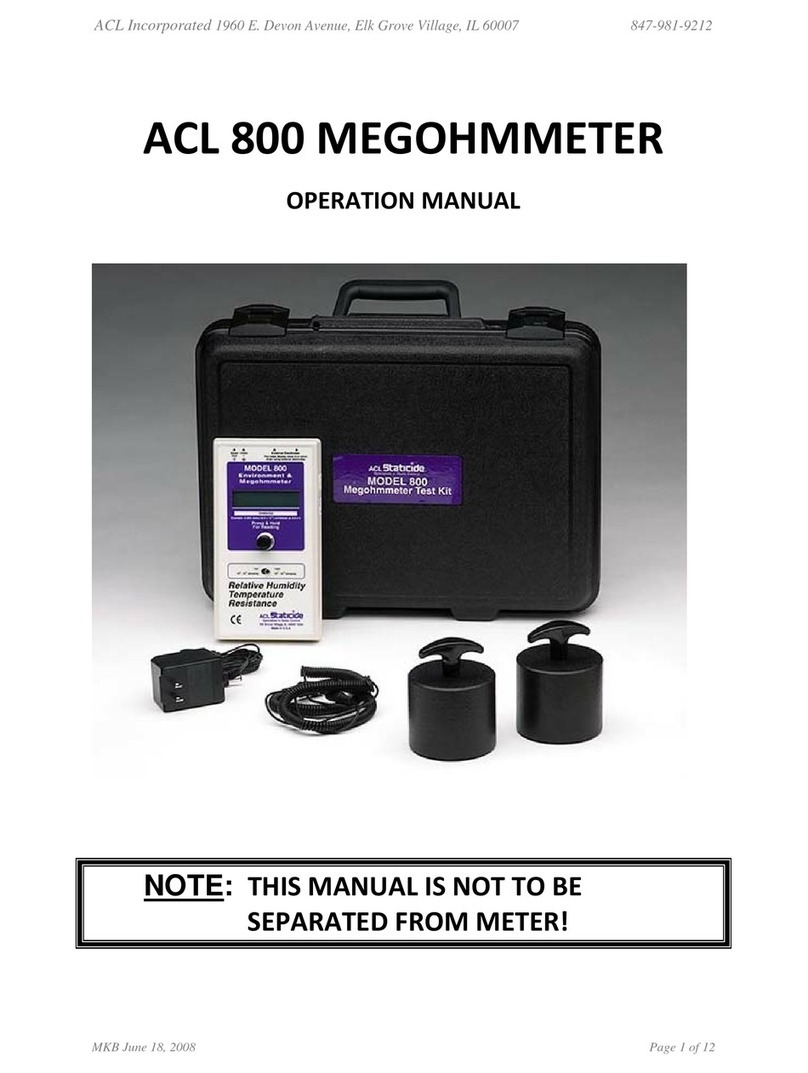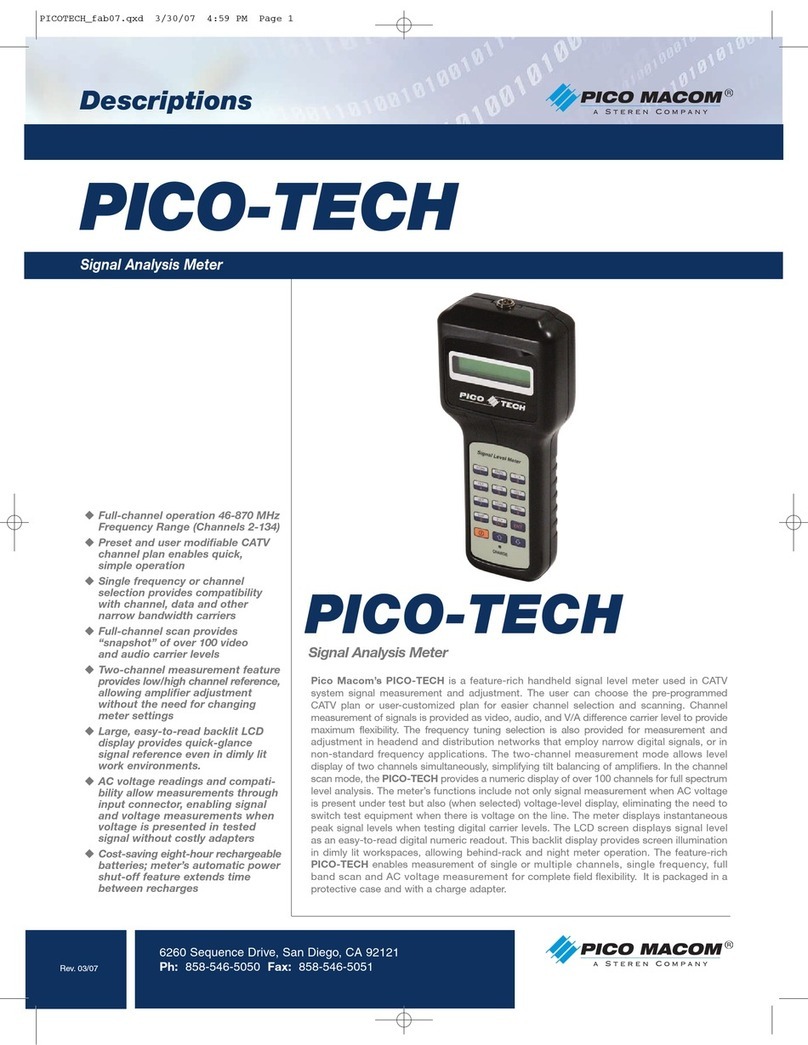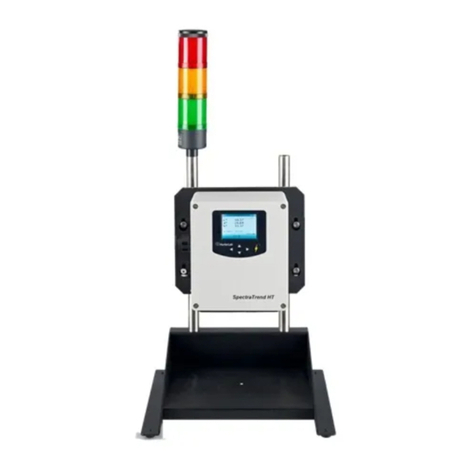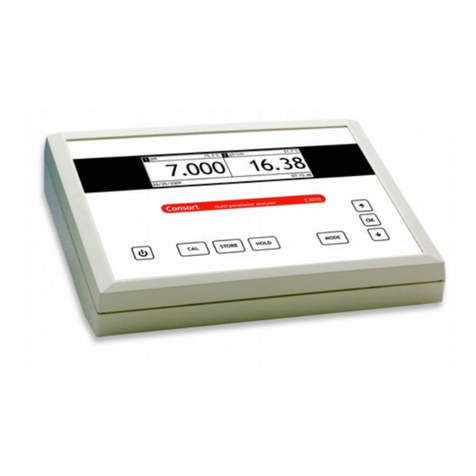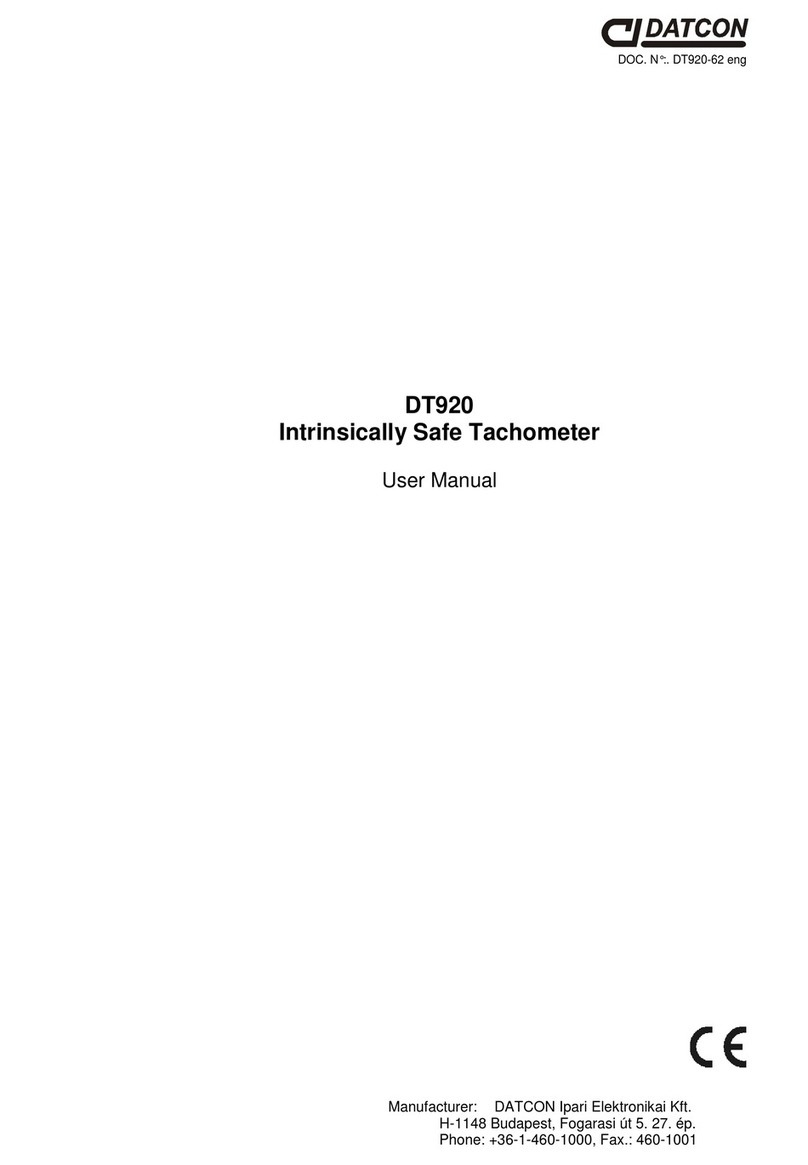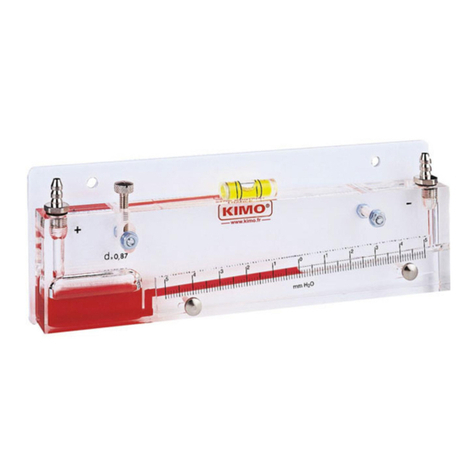Jandy TruSense TRUSENSE User manual

RECOGNIZED
COMPONENT
5010915
ENGLISH |FRANÇAIS |ESPAÑOL
OWNER’S MANUAL
FOR YOUR SAFETY - This product must be installed and serviced by a contractor
who is licensed and qualified in pool equipment by the jurisdiction in which the
product will be installed where such state or local requirements exist. The maintainer
must be a professional with sufficient experience in pool equipment installation and
maintenance so that all of the instructions in this manual can be followed exactly.
Before installing this product, read and follow all warning notices and instructions
that accompany this product. Failure to follow warning notices and instructions
may result in property damage, personal injury, or death. Improper installation and/
or operation may void the warranty.
Improper installation and/or operation can create unwanted electrical hazard
which can cause serious injury, property damage, or death. DO NOT MODIFY THIS
EQUIPMENT.
ATTENTION INSTALLER - This manual contains important information about the
installation, operation and safe use of this product. This information should be
given to the owner/operator of this equipment.
WARNING
Water Chemistry Analyzer
Jandy TruSense™
Models: TRUSENSE & TRUSENSEPH
This product requires AquaLink RS revision X or later

Page 2 ENGLISH Jandy®TruSense Water Chemistry Analyzer | Owner’s Manual
DRAFT
Table of Contents
Contents
Section 1. Important Safety Instructions.......3
Section 2. General Overview ..........................8
2.1 Product Overview..........................................................8
2.2 Product Contents...........................................................8
2.3 Product Specifications ........................................................9
Section 3. Jandy TruSense Installation ......... 9
Section 4. pH & ORP Sensors Installation...10
Section 5. Calibration ....................................13
5.1 2 point pH Sensor Calibration .....................................13
5.2 1 point pH Sensor Calibration .....................................16
5.3 ORP Sensor Calibration ..............................................18
Section 6. Sensor Cleaning...........................19
Section 7. Winterization ................................20
Section 8. Troubleshooting...........................22
Section 9. Spare Parts...................................24
FCC Regulatory Compliance Statement
This device complies with part 15 of the FCC Rules. Operation is subject to the following two conditions:
(1) This device may not cause harmful interference, and
(2) this device must accept any interference received, including interference that may cause undesired
operation.
CAUTION: changes or modications not expressly approved by the party responsible for compliance could
void the user’s authority to operate the equipment.
NOTE: This equipment has been tested and found to comply with the limits for a Class B digital device,
pursuant to part 15 of the FCC Rules. These limits are designed to provide reasonable protection against
harmful interference in a residential installation. This equipment generates, uses and can radiate radio
frequency energy and, if not installed and used in accordance with the instructions, may cause harmful
interference to radio communications. However, there is no guarantee that interference will not occur in a
particular installation. If this equipment does cause harmful interference to radio or television reception,
which can be determined by turning the equipment o and on, the user is encouraged to try to correct the
interference by one or more of the following measures:
- Reorient or relocate the receiving antenna.
- Increase the separation between the equipment and receiver.
- Connect the equipment into an outlet on a circuit dierent from that to which the receiver is connected.
- Consult the dealer or an experienced radio/TV technician for help.

Jandy®TruSense Water Chemistry Analyzer | Owner’s ManualJandy®TruSense Water Chemistry Analyzer | Owner’s ManualENGLISH Page 3
Section 1. Important Safety Instructions
READ AND FOLLOW ALL INSTRUCTIONS
This device can only be used in swimming pools and swimming
pools with a built-in spa. All electrical work must be performed by a
licensed electrician and conform to all national, state (provincial),
and local codes. When installing and using this electrical equipment,
basic safety precautions should always be followed, including the
following:
WARNING
EQUIPMENT UNDER PRESSURE: Always turn pump off prior to
installing or servicing the Jandy TruSense Water Chemistry Analyzer.
Your pump/filter system is operated under pressure and the pressure
must be released before you begin work. Please see your pump/filter
owner’s manual for further instructions.
PREVENT CHILD DROWNING: Supervise children at all times. Do
not let anyone, especially small children, sit, step, lean or climb on any
equipment installed as part of your pool’s operational system. Locate
the components of your operational system at least 1.5 m (5 ft.) from the
pool so children cannot use the equipment to access the pool and be
injured or drown.
CAUTION
Precautions for use:
• Do not use Jandy TruSense for anything other than water analysis.
• Jandy TruSense is not a toy. Avoid shocks as it may damage product.
• To reduce the risk of injury, do not permit children to use this product.
• Keep Jandy TruSense out of reach of children when handling it (e.g.
calibration and standby) due to the use of chemicals. Store
calibration products out of reach of children.
• The pH & ORP sensors should not be left dry. If you need to remove
the sensors out of the Jandy TruSense, carefully submerge them into
the sensor storage tubes with KCI (saturated potassium chloride),
or pH4 buer solution, or as a last resort, pool water with a good
amount of cooking salt.
• Install the included sensor hole plugs into Jandy TruSense when the
sensors are absent.
• Do not use demineralized water in the sensor storage tubes.
• MAINTAIN WATER CHEMISTRY IN ACCORDANCE WITH
MANUFACTURER’S INSTRUCTIONS

Page 4 ENGLISH Jandy®TruSense Water Chemistry Analyzer | Owner’s Manual
DRAFT
WARNING
Prolonged immersion in hot water may induce hyperthermia.
Hyperthermia occurs when the internal temperature of the body reaches a level
several degrees above the normal body temperature of 98.6°F (37 °C). The
symptoms of hyperthermia include dizziness, fainting, drowsiness, lethargy, and
an increase in the internal temperature of the body.
The effects of hyperthermia include:
• Unawareness of impending danger
• Failure to perceive heat
• Failure to recognize the need to exit spa
• Physical inability to exit spa
• Fetal damage in pregnant women
• Unconsciousness resulting in a danger of drowning
To Reduce the Risk of Injury -
• The water in a spa should never exceed 104°F (40°C). Water
temperatures between 100°F (38°C) and 104°F (40°C) are
considered safe for a healthy adult. Lower water temperatures are
recommended for young children and when spa use exceeds 10
minutes.
• Since excessive water temperatures have a high potential for
causing fetal damage during the early months of pregnancy,
pregnant or possibly pregnant women should limit spa water
temperatures to 100°F (38°C).
• Before entering a spa or hot tub, the user should measure the water
temperature with an accurate thermometer since the tolerance of
water temperature-regulating devices varies.
• The use of alcohol, drugs, or medication before or during spa or
hot tub use may lead to unconsciousness with the possibility of
drowning.
• Obese persons and persons with a history of heart disease, low
or high blood pressure, circulatory system problems, or diabetes
should consult a physician before using a spa.
• Persons using medication should consult a physician before using
a spa or hot tub since some medication may induce drowsiness
while other medication may affect heart rate, blood pressure, and
circulation.

Jandy®TruSense Water Chemistry Analyzer | Owner’s ManualJandy®TruSense Water Chemistry Analyzer | Owner’s ManualENGLISH Page 5
WARNING
• People with infectious diseases should not use a spa or hot tub.
• To avoid injury, exercise care when entering or exiting the spa or
hot tub.
• Do not use drugs or alcohol before or during the use of a spa or
hot tub to avoid unconsciousness and possible drowning.
• Pregnant or possibly pregnant women should consult a physician
before using a spa or hot tub.
• Water temperature in excess of 100°F (38°C) may be injurious to
your health.
• Before entering a spa or hot tub measure the water temperature
with an accurate thermometer.
• Do not use a spa or hot tub immediately following strenuous
exercise.
• Prolonged immersion in a spa or hot tub may be injurious to your
health.
• Do not permit any electric appliance (such as a light, telephone,
radio, or television) within 5 ft. (1.5 m) of a spa or hot tub.
• The use of alcohol, drugs or medication can greatly increase the
risk of fatal hyperthermia in hot tubs and spas.
CAUTION
It is important to note that certain materials used in and around
swimming pools and spas may not be compatible with chemicals
commonly used to purify pool and spa water (e.g. acids, chlorine, salt,
stabilizers, etc.).

Page 6 ENGLISH Jandy®TruSense Water Chemistry Analyzer | Owner’s Manual
DRAFT
WARNING
When mixing acid or other chemicals with water, ALWAYS ADD THE
ACID OR CHEMICALS TO WATER. NEVER ADD WATER TO THE
ACID OR CHEMICALS.
Some helpful considerations may include:
• Choosing plants that can withstand splash out of pool water containing
chlorine and/or salt and other water purication chemicals.
• All metal components used in and around a pool should be of a high
grade, quality stainless steel.
• Careful selection of masonry products. The porosity and hardness of
natural stones varies greatly. Therefore we recommend you consult with
your builder or stone contractor on the best choice for stone materials
around your pool or spa.
• Sealing all masonry products. Professionals in the stone industry specify
that even natural stone, especially when used outdoors, be sealed to
prevent weathering, staining, and premature degradation. Consult with
your stone or deck contractor for the proper sealer for the masonry
products you have selected to use around your pool or spa.
• For the optimal results, sealers should be reapplied on a regular basis.
Reapply the protective sealer on a schedule per the manufacturer’s
instructions.
• Use of chemicals other than those recommended may be hazardous.
Follow the chemical manufacturers instructions.
CAUTION
In order to avoid premature failure or damage to the equipment, protect
the equipment from direct water exposure from sprinklers, water runoff
from rooftops and drainage, etc. Failure to comply may cause equipment
failure, and may also void warranty.

Jandy®TruSense Water Chemistry Analyzer | Owner’s ManualJandy®TruSense Water Chemistry Analyzer | Owner’s ManualENGLISH Page 7
SAVE THESE INSTRUCTIONS
WARNING/SHOCK HAZARD
Follow all applicable electrical codes. Prior to installation or performing
any service, turn off all switches and the main breaker in the pool/spa
pump electrical circuit. Failure to comply may cause a shock or hazard
resulting in severe personal injury or death. While disconnecting and/or
connecting any electrical wiring, be careful not to damage or abrade any
of the wiring.
WARNING
Do not connect the system to an unregulated city water system or other
external source of pressurized water producing pressures greater than 35
PSI.
To minimize risk of severe injury or death, filter, pump, and pH and ORP
Sensors should not be subjected to the piping system pressurization test.
Local codes may require the pool piping system to be subjected to a
pressure test. These requirements are generally not intended to apply to
the pool equipment, such as filters, pumps, water chemistry analyzers, or
chlorinators.
If, however, the WARNING cannot be followed and pressure testing of the
piping system must include the filter, pump, water chemistry analyzers
and/or chlorinator, BE SURE TO COMPLY WITH THE FOLLOWING
SAFETY INSTRUCTIONS:
• Check all clamps, bolts, lids, lock rings, and system accessories to
ensure they are properly installed and secured before testing.
• Remove the pH and ORP sensors from Jandy TruSense Water
Chemistry Analyzer and use the provided plugs.
• RELEASE ALL AIR in the system before testing. AIR PRESSURE must
NOT be used for pressure testing.
• Water pressure for test must NOT EXCEED 35 PSI.
• Water temperature for test must NOT EXCEED 100°F (38°C)
• Limit test to 24 hours. After test, visually check system to be sure it is
ready for operation.
Notice: These parameters apply to Fluidra equipment only. For
non-Fluidra equipment, consult the equipment manufacturer.

Page 8 ENGLISH Jandy®TruSense Water Chemistry Analyzer | Owner’s Manual
DRAFT
Section 2. General Overview
2.1 Product Overview
This manual provides instructions for installing the Jandy TruSense Water
Chemistry Analyzer.
NOTE: Installation of the Jandy AquaLink®RS Revision X or later is
required prior to the installation of the Jandy TruSense Water Chemistry
Analyzer.
Sensors measure the following:
• pH (hydrogen potential): this value measures the acidic or basic
character of a medium. pH contributes to the eectiveness of the
disinfectant.
• ORP/REDOX (measurement of active sanitizer in mV): The ORP
measurement is reected in millivolts (mV). The measurement taken by
the ORP probe is a voltage expressed in millivolts (mV), which repre-
sents the more or less oxidizing nature of the water. Only available on
TRUSENSE model.
• Bonding lug helps reduce stray current.
2.2 Product Contents
1 - TruSense Water Chemistry Analyzer
2 - pH Sensor (blue) with storage tube
3 - ORP Sensor (red) with storage tube*
4 - pH 4 and pH 7 calibration buffer solution
5 - ORP 470 mV calibration buffer solution*
* The ORP sensor and ORP buer solution are only available on the TRUSENSE model.
NOTE: Keep the pH & ORP sensor storage tubes and buer solution
packets for future use.

Jandy®TruSense Water Chemistry Analyzer | Owner’s ManualJandy®TruSense Water Chemistry Analyzer | Owner’s ManualENGLISH Page 9
2.3 Product Specifications
Product Specications
Electrode maximum operating pressure is 25 psi (1.7 bar). Extreme
pressure variances may distort readings and can damage
the electrode.
Sensors Measurements
pH Measurement range: 0 - 14
Resolution: 0.1
ORP/Redox (disinfection
potential of the water) Measurement range: 0 to 1000 mV
Resolution: 10 mV
Section 3. Jandy TruSense Installation
NOTE: Jandy TruSense has been designed so water ow can come from
either direction. For the ease of calibration and servicing, consider
having the sensors visible from the front of the unit.
NOTE: Always install TruSense after the lter and before the heating
system and water care devices (saltwater chlorinator cell, solar,
chlorinator, acid injection...).
WARNING
Risk of Electric Shock. Install at least 5 feet (1.5 m) from inside wall of
hot tub or spa using nonmetallic plumbing.
1. Turn off pump and filtration system at the breaker. Pump needs to be in
auto, NOT service mode.
2. Close the valves if needed.
3. Cut and remove 9.75” of the existing pipe to fit Jandy TruSense, see
Figure 1(a).
4. Clean and dry pipes. Use pipe glue to join Jandy universal unions to
existing pipe.
5. Once glue has dried, install Jandy TruSense, ensure the o-rings
installed on the union nuts correctly, and tighten.
6. Connect the four conductor RS485 cable (red connector) to the
automation system, see Figure 1(b)

Page 10 ENGLISH Jandy®TruSense Water Chemistry Analyzer | Owner’s Manual
DRAFT
AquaLink
RS
(Rev X or later)
a
b
Figure 1. Install Jandy TruSense on the Pipe
7. Open valves if needed.
8. Turn on power at the breaker to the pump and the filtration system.
Check for leaks.
9. Connect bonding lug to avoid pH and ORP measurement issues.
NOTE: Connect a minimum 8 AWG (8.4 mm2) solid copper conductor
between this unit and any metal equipment, metal enclosures of
electrical equipment, metal water pipe, or conduit within 5 feet
(1.5 m) of the unit.
For Canada:
All eld-installed metal components such as rails, ladders, drains,
or other similar hardware within 3 m of the spa or hot tub shall be
bonded to the equipment grounding bus with copper conductors not
smaller than No. 6 AWG.
Section 4. pH & ORP Sensors Installation
1. Turn off pump and filtration system at the breaker. Pump needs to be in
auto, NOT service mode.
2. Close the valves if needed.
3. Remove Jandy TruSense top cover, see Figure 2(a).
4. Unscrew and remove sensor plugs, see Figure 2(b).
NOTE: The ORP sensor will not be included in Model: TRUSENSEPH.

Jandy®TruSense Water Chemistry Analyzer | Owner’s ManualJandy®TruSense Water Chemistry Analyzer | Owner’s ManualENGLISH Page 11
a
b
Figure 2. Remove Cap and Plugs
5. Install the sensor compression fittings and their adapted o-rings
(provided) in place of sensor plugs, see Figure 3(a). Hand tighten, no
tools needed.
6. Loosen the thread on the sensor storage tube and remove the pH sensor
(blue) carefully, DO NOT touch the glass tube.
7. Loosen the top of the left compression fitting, insert pH sensor into
fitting and push down slowly. Hand tighten the fitting once sensor is
completely inserted into fitting, see Figure 3(b)
8. Loosen the thread on sensor storage tube and remove the ORP sensor
(red) carefully, DO NOT touch the glass tube.
9. Loosen the top of the right compression fitting, insert ORP sensor into
fitting and push down slowly. Hand tighten the fitting once sensor is
completely inserted into fitting, see Figure 3(c)
NOTE: Save the sensor storage tubes for winterization.

Page 12 ENGLISH Jandy®TruSense Water Chemistry Analyzer | Owner’s Manual
DRAFT
bc
a
Figure 3. Install Fittings and Sensors
10. Connect the Blue pH sensor BNC connector to the BLUE labeled left
side connector of the electronic circuit board. See Figure 4.
11. Connect the red ORP sensor BNC connector to the RED labeled right
side connector of the electronic circuit board. See Figure 4.
BLUE RED
Figure 4. Connect Sensor Wires
12. Install Jandy TruSense top cover.

Jandy®TruSense Water Chemistry Analyzer | Owner’s ManualJandy®TruSense Water Chemistry Analyzer | Owner’s ManualENGLISH Page 13
Section 5. Calibration
NOTE: To maintain accurate and reliable operation, the sensors must be
calibrated before the initial use. It is recommended to calibrate
sensors monthly and when the measurement seems inaccurate.
Buffer solution is included for checking calibration.
1. NOTE: For calibration, you will need 20 mL of pH 4 buffer solution, 20mL
of pH 7 buffer solution and 20mL of ORP 470mV buffer solution. These are
available from Fluidra (pH & ORP R0952600, pH R0952500, ORP R0952800).
You can also use standard calibration buffer solutions available in your pool
store (pH 4, pH 7, ORP 460mV, ORP 468mV, ORP 470mV.
5.1 2 point pH Sensor Calibration
2 point calibration is the preferred and most accurate across range.
1. Turn off pump and filtration system at the breaker. Automation System
needs to be in auto, NOT service mode.
2. Close the valves if needed.
3. Fill a glass with clean water and rinse the sensor storage tube. Keep the
clean water for rinsing.
4. Fill the storage tube to the halfway point with pH 7 buffer solution, see
Figure 5.
Figure 5. Fill storage tube halfway

Page 14 ENGLISH Jandy®TruSense Water Chemistry Analyzer | Owner’s Manual
DRAFT
5. Loosen the blue left compression fitting and carefully lift pH sensor
from the plastic housing, DO NOT touch the glass tube,
see Figure 6.
Figure 6. Remove pH sensor
6. Disconnect the Blue pH sensor BNC connector from the BLUE labeled
left side connector of the electronic circuit board.
7. Rinse the tip of the pH sensor with clean water.
8. Shake pH sensor to remove residual water. DO NOT put the sensor on
the ground or touch the glass tube.
9. Connect the Blue pH sensor BNC connector to the BLUE labeled left
side connector of the electronic circuit board.
NOTE: The pH sensor wire should remain connected during calibration.
10. Submerge the sensor into the pH 7 buffer solution inside the storage
tube. Start calibration in the iAquaLink app or on the OneTouch
controller (AquaLink®RS only) go to: MENU / HELP > SYSTEM
SETUP > pH > 2 POINT, see Figure 7.

Jandy®TruSense Water Chemistry Analyzer | Owner’s ManualJandy®TruSense Water Chemistry Analyzer | Owner’s ManualENGLISH Page 15
Calibrate pH
Figure 7. Submerge sensor & start calibration
11. Remove the pH sensor from storage tube and rinse the tip with clean
water.
12. Shake pH sensor to remove residual water. Partially insert the pH
sensor back into Jandy TruSense, see figure 8. DO NOT put sensor on
the ground or touch the glass tube.
a
Figure 8. Partially insert
13. Remove pH 7 buffer solution from storage tube.

Page 16 ENGLISH Jandy®TruSense Water Chemistry Analyzer | Owner’s Manual
DRAFT
14. Fill the storage tube to the halfway point with pH 4 buffer solution.
15. Submerge the pH sensor in the pH 4 buffer solution inside the
storage tube. Start the pH4 calibration in the iAquaLink app or on the
OneTouch controller (AquaLink®RS only) go to: MENU / HELP >
SYSTEM SETUP > TRUSENSE, see Figure 9.
Calibrate pH
Figure 9. Submerge sensor & start calibration
16. Remove the pH sensor from storage tube and rinse the tip of the sensor
with clean water.
17. Once calibration is complete, carefully insert pH sensor back into
Jandy TruSense and hand tighten the compression fitting.
NOTE: DO NOT leave sensor exposed to air.
It may take a few hours for the pH & ORP Sensor readings to
stabilize after being installed on the pool plumbing.
5.2 1 point pH Sensor Calibration
1. Get a clean glass or plastic container and fill it with water. DO NOT
use a metal container.
2. Measure the pH of water sample.
3. Input measured pH in the iAquaLink app or on the OneTouch
controller (AquaLink®RS only) go to: MENU / HELP > SYSTEM
SETUP > pH > 1 POINT.

Jandy®TruSense Water Chemistry Analyzer | Owner’s ManualJandy®TruSense Water Chemistry Analyzer | Owner’s ManualENGLISH Page 17
4. Turn off pump and filtration system at the breaker. Automation system
needs to be in auto NOT service mode.
5. Close the valves if needed.
6. Disconnect the Blue pH sensor BNC connector from the BLUE labeled
left side connector of the electronic circuit board
7. Loosen the left compression fitting and lift pH sensor carefully from
plastic housing, DO NOT touch the glass tube.
8. Connect the Blue pH sensor BNC connector to the BLUE labeled left
side connector of the electronic circuit board.
9. Submerge the sensor into the container with measured water sample.
Start calibration using the iAquaLink app or on the OneTouch
controller (AquaLink®RS only) go to: MENU / HELP > SYSTEM
SETUP > TRUSENSE, see Figure 10.
Calibrate pH
Figure 10. Submerge sensor in water sample
10. Remove the pH sensor from storage tube and rinse the tip of the sensor
with clean water.
11. Once calibration is complete, carefully insert pH sensor back into
Jandy TruSense and hand tighten the compression fitting.

Page 18 ENGLISH Jandy®TruSense Water Chemistry Analyzer | Owner’s Manual
DRAFT
5.3 ORP Sensor Calibration
Only required for TRUSENSE model.
NOTE: The ORP sensor wire should remain connected during calibration.
1. Turn off pump and filtration system at the breaker. Automation
System needs to be in auto, NOT service mode.
2. Close the valves if needed.
3. Disconnect the Red ORP sensor BNC connector from the RED
labeled right side connector of the electronic circuit board
4. Fill the storage tube to the halfway point with ORP 470 buffer
solution, see Figure 11.
Figure 11. Fill storage tube halfway
5. Loosen the right compression fitting and lift ORP sensor carefully
from plastic housing, DO NOT touch the glass tube.
6. Rinse the tip of the ORP sensor with clean water.
7. Shake ORP sensor to remove residual water. Do NOT touch the gold
tip at the end of the sensor.
8. Connect the Red ORP sensor BNC connector to the RED labeled right
side connector of the electronic circuit board.
9. Submerge sensor into the ORP 470 mV buffer solution inside the
storage tube. Start calibration using and following the iAquaLink®app
or OneTouch controller (AquaLink®RS only) go to: MENU / HELP >
SYSTEM SETUP > TRUSENSE, see Figure 12.

Jandy®TruSense Water Chemistry Analyzer | Owner’s ManualJandy®TruSense Water Chemistry Analyzer | Owner’s ManualENGLISH Page 19
Calibrate pH
Figure 12. Submerge sensor & start calibration
10. Remove the ORP sensor from storage tube and rinse the tip of the
sensor with clean water.
11. Once calibration is complete, carefully insert sensor back into Jandy
TruSense and hand tighten the compression fitting.
Section 6. Sensor Cleaning
Sensors must be regularly visually checked and cleaned if there is
visible buildup.
1. Turn off pump and filtration system at the breaker. Automation System
needs to be in auto, NOT service mode.
2. Close the valves if needed.
3. Disconnect the sensor BNC connector from the electronic circuit
board.
4. Loosen the compression tting and lift the sensor carefully from
plastic housing.
5. Rinse the sensor with clean water. Shake o excess water.
6. Gently brush the junctions, glass bulb, and metal strip using a new or
clean toothbrush for 1 minute.
7. Prepare a diluted solution of muriatic acid (10 drops in 2 . oz of tap
water).
8. Wash the sensor in the diluted acid solution for 2 minutes.

Page 20 ENGLISH Jandy®TruSense Water Chemistry Analyzer | Owner’s Manual
DRAFT
9. Rinse the sensor in clean tap water for 1 minute. Shake o excess
water.
10. Connect the sensor BNC connector to the electronic circuit board.
Section 7. Winterization
Sensors must be stored indoors, in water, over the winter when the
pool is not in use.
1. Turn off pump and filtration system at the breaker. Pump needs to be
in auto, NOT service mode.
2. Close the valves if needed.
3. Fill the sensor storage tubes with pool water and set nearby the Jandy
TruSense.
4. Remove Jandy TruSense top cap.
5. Disconnect the pH and ORP sensor BNC wires from the Jandy
TruSense electronic circuit board.
6. Loosen and remove pH and ORP sensors from compression fittings.
7. Carefully place the sensors in the sensor storage tubes, DO NOT touch
the glass bulb at the end of the sensors, see Figure 13.
8. Store sensors indoors in a dry environment.
9. Remove water from Jandy TruSense.
Figure 13. Store Sensors
This manual suits for next models
1
Table of contents
Languages:
